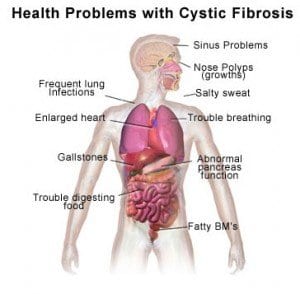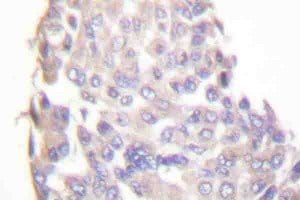 An extended trial of a drug that is commonly used for people who have been diagnosed with type 2 diabetes, an oral DPP-4 inhibitor Linagliptin (Tradjenta) is safe and effective in its ability to lower glucose levels for up to 102 weeks by itself or with a combination of other oral anti-diabetic medication.
An extended trial of a drug that is commonly used for people who have been diagnosed with type 2 diabetes, an oral DPP-4 inhibitor Linagliptin (Tradjenta) is safe and effective in its ability to lower glucose levels for up to 102 weeks by itself or with a combination of other oral anti-diabetic medication.
The trial consisted of 2,121 people who took part of four recent 24-week randomized, double-blind, and placebo controlled trials and were monitored for 78 weeks more.
During the study, 1,532 people had recently received Linaglipin and continued to do so throughout the study while 589 people received placebo during the 78-week run of the trial.
Participants came from all walks of life, from 231 sites in 32 countries such as Argentina, Austria, Belgium, Canada, China, Croatia, the Czech Republic, Finland, Germany, Greece, Hungary, India, Israel, Italy, Japan, Korea, Malaysia, Mexico, the Netherlands, New Zealand, the Philippines, Poland, Romania, Russia, Slovakia, Spain, Sweden, Taiwan, Thailand, Ukraine, the United Kingdom and the United States.
David R Owens, Professor Emeritus, Centre for Endocrinology and Diabetes Sciences at Cardiff University, Wales, UK said, “Initial 24-week trials showed that linagliptin, either on its own or with other glucose-lowering agents, was effective in improving glycemic control without weight gain or an independent increased risk of hypoglycemia (reduced blood sugar levels). Linagliptin works by blocking the action of DPP-4, an enzyme that destroys the hormone GLP-1, which helps the body produce more insulin when it is needed.”
The drug was given once daily, orally, in all cases. Many times it was given on its own and other times it was used in a combination of others drugs like metformin or metformin plus a sulphonylurea or pioglitazone.
The study found that the average age among the participants was 57.5 years and 75 percent of the participants where younger than 65. 51.8 percent were male and 52.5 percent were diagnosed more than five years ago.
Some participants has side effects, however they were either mild or moderate. A rare few (3.8 percent) were severe and 3.4 percent has to stop use of the drug altogether. Collectively, 14.3 percent has drug-related adverse effects.
Some participants (13.9 percent) also experienced hypoglycemia (low blood sugar as well and 6.9 percent was related to the drug.
Professor Owens concludes, “This is the largest data set of long-term clinical evidence for linagliptin to date. Findings from the 78-week open-label extension involving 2,121 people with type 2 diabetes demonstrate sustained glycemic control for up to 102 weeks treatment duration. They also provide evidence that supports the efficacy and tolerability profile seen in previously reported 24-week studies.
“Therefore this extension study shows that linagliptin is an effective and well tolerated therapy for the long-term management of type 2 diabetes.”


 Recently, researchers have found that fruit flies, who are overeating in the area of carbohydrates and
Recently, researchers have found that fruit flies, who are overeating in the area of carbohydrates and  Diabetes affects more than 25 million people in the United States and plagues its victims with serious medical conditions such as
Diabetes affects more than 25 million people in the United States and plagues its victims with serious medical conditions such as  What do these three conditions have in common after a woman is over 60 years of age?
What do these three conditions have in common after a woman is over 60 years of age? New findings from the Alpha Omega Trial suggest that low-dose omega-3 fatty acid supplementation could play a role in preventing ventricular arrhythmia-related events in patients who have both diabetes and a history of myocardial infarction.
New findings from the Alpha Omega Trial suggest that low-dose omega-3 fatty acid supplementation could play a role in preventing ventricular arrhythmia-related events in patients who have both diabetes and a history of myocardial infarction. In addition to Type 1 and Type 2 diabetes, there is another variant of the disease: cystic fibrosis-related diabetes. It differs in some important ways from Type 1 and Type 2 diabetes and it requires different treatment methods.
In addition to Type 1 and Type 2 diabetes, there is another variant of the disease: cystic fibrosis-related diabetes. It differs in some important ways from Type 1 and Type 2 diabetes and it requires different treatment methods. New research conducted at the University of Glasgow, Scotland, suggests that thrombolytic drugs—also called “clot-busting” drugs due to their use in dissolving blood clots—improve outcomes in patients who have suffered from strokes, even when they have a past history of stroke or diabetes. In fact, outcomes were similar to those demonstrated by patients who had experienced neither stroke nor diabetes.
New research conducted at the University of Glasgow, Scotland, suggests that thrombolytic drugs—also called “clot-busting” drugs due to their use in dissolving blood clots—improve outcomes in patients who have suffered from strokes, even when they have a past history of stroke or diabetes. In fact, outcomes were similar to those demonstrated by patients who had experienced neither stroke nor diabetes. A new study found that an enzyme called IKKbeta was linked to increased metabolism in lab mice. When researchers engineered the mice to express the IKKbeta enzyme in their
A new study found that an enzyme called IKKbeta was linked to increased metabolism in lab mice. When researchers engineered the mice to express the IKKbeta enzyme in their